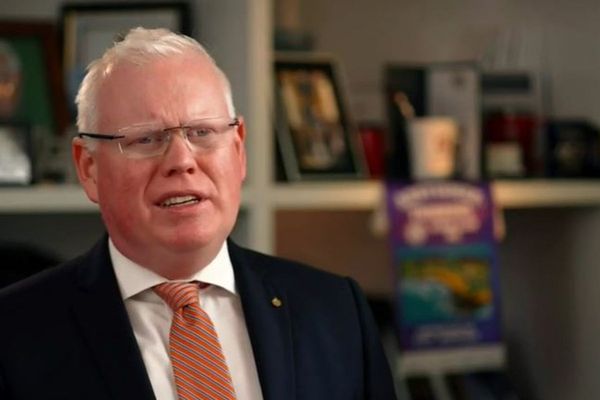
It was another year of many highs and countless lows for the Indian media.
At the beginning, we saw record TRPs for celebratory coverage and little space for questions around the Ram Temple ceremony. Manipur remained on the boil, and away from primetime cameras (much like last year) as TV news chose to air a blow-by-blow account of matters such as the Ambani wedding.
Meanwhile, channels that were quick to make a beeline to speak to Prime Minister Narendra Modi in the run-up to the Lok Sabha polls were silent or dismissive of questions thrown up by tranches of electoral bonds data. And sensationalism replaced sensitivity as usual – the RG Kar case coverage and Bengaluru techie Atul Subhash’s death being examples.
Newslaundry reached out to journalists to hear their perspectives on the state of Indian journalism and how the media fared in 2024. We posed three prime questions: What was a high point for the Indian media in 2024, what was the lowest, and what hopes they have for Indian journalism for the future. While many are not optimistic about Indian journalism, some placed their hopes in smarter readers and an independent media.
Here’s what they said:

Sucheta Dalal, managing editor, Moneylife
Frankly, I am completely confused about where journalism is headed in the time of artificial intelligence, influencers, and propaganda. In a way, influencers, propagandists are more successful, get paid more and are considered more credible by many.
What is worse is that people think the kind of journalism practised by mainstream news channels and newspapers is what journalists are supposed to be doing.
These days, what should be published is decided by the advertiser and the size of the advertising budget. Today, the largest corporate houses in India, the likes of Adani and Ambani, either own large parts of media houses or are big advertisers or sponsors of many of their events. Not just business news, even political reporting is shaped by this factor. Moreover, to establish credibility, huge media conclaves are sponsored by Ponzi kings (with no discernable business), and journalists have no issues conducting interviews with such players.

Anusha Ravi Sood, executive editor, South First
Independent, non-mainstream media played quite a significant role in ensuring that some problematic legislations were reconsidered. For instance, the government withdrew the contentious Broadcasting Bill.
Reportage on electoral bonds was another high for independent Indian journalism. The kind of stories that came in the aftermath of the Supreme Court order on electoral bonds were noteworthy. Also of note was the kind of reportage that preceded the order.
Another highlight this year was the recognition of journalists like Ravish Kumar in the independent space. After spending so many years with mainstream media, the kind of influence and following he commands even as an independent journalist is remarkable.
The willingness of Indian readers and viewers to start looking at alternate venues for their daily news is another striking feature of this year. I do think that independent media, journalists saw a lot more engagement in 2024.
All lows were hit exclusively by mainstream news outlets who continue to pay no price for being hate enablers. Newsrooms continue to overlook the need for accountability, and don’t hold those peddling misinformation and bigotry responsible. There is no consequence for what a lot of news channels do in the name of journalism.
Another reason for concern has been the hounding of activists and journalists…there have been scribes who have died for exposing the rot in the system whether in small towns of Uttar Pradesh or big cities like Bengaluru. Take for instance, Mohammed Zubair who had to go into hiding because a complaint was registered against him just for highlighting a Hindutva leader’s hate speech. By not doing their job and quelling critical thinking, the mainstream media played a huge role in this shrinking of space for free speech and expression.
I do hope that in the coming year media houses go back to what journalism truly is. I do hope more media organisations and their owners take accountability, and understand how wonderfully powerful their channels are. One also hopes that journalists get to do their job free of bias, pressure, and with the freedom to pursue stories for what they are, not what they should be.

Coomi Kapoor, contributing editor, The Indian Express
I believe the high point for Indian media this year was being saved from the threat of majoritarianism with the BJP not winning the Lok Sabha elections with a thumping majority.
Indian media reached a new low with many news outlets echoing BJP’s claim of winning the elections with a 400+ majority, something the party did not achieve eventually.
But there are many brave people who continue to fight authoritarianism. Indian journalism has survived till now and it will hopefully survive further.

Amit Kumar, executive editor, EastMojo
Now, we see more data stories in journalism and I see it is a very positive sign. In fact, in 2024, I can safely say that data journalism stands on its own in India.
While certain kinds of stories will continue to be done by big publications and media houses, I think, data has sort of levelled the field. Now even smaller outlets can do much more powerful stories because they have access to data. And more importantly, they are learning a lot about how to use data effectively to tell good stories.
The low point for Indian media has remained the same as the last few years. Certain media houses kept hitting rock bottom with the ceaseless reality TVfication (if there is such a word) of news. We continued to see it in Manipur.
We also saw the stark difference in news coverage of events unfolding in Bangladesh, where one side wanted to make it sound as if Hindus were being attacked everyday and another set of media houses tried to downplay the issue as if nothing was happening. News websites have increasingly become a platform where you go not to gather information but confirm your biases.
As newsrooms keep getting divided on what they believe, I think the biggest casualty has been honest, real-time information. I don't expect this situation to improve anytime soon, in fact, I expect it to get worse.
I don’t have much hope from journalism practitioners. I have more hope from the readers. Readers should identify newsrooms, publications that empower them, and as a token of appreciation, support such outlets by buying subscriptions. I hope that the subscriber-model picks up in India. Without such a model, the media cannot be unbiased.
As the old saying goes, if something is free, someone else is paying for it. So I hope that in 2025 we will begin to see sustainable subscription models, because that is journalism's last hope.

Rupa Jha, co-founder, Collective Newsroom
One high point for me would be the rise of independent voices even if it's on third party platforms like YouTube. I think what YouTube did was very interesting because the platform gave a voice to a lot of people, including many journalists who no longer work for a media company or are attached to any institution. They emboldened independent journalism and have become a voice of the people. They really made a difference by bringing overlooked narratives into the spotlight.
Another high point, for me personally, was that 300 journalists came together for probably the first time in the history of media, at least in the history of the BBC, and launched their own company. We decided that we were not going to give up, we were not going to find work at another organisation and with this motivation we formed the Collective Newsroom.
The increasing use of artificial intelligence is also an interesting development in our industry. Of course, the use of AI-generated content needs much care, which is largely missing. I would like to look at it as a positive trend overall, and I hope that technological innovation brings more efficiency, and really helps us become more accurate in our reportage.
One of the lows for Indian journalism has to be the coverage of Manipur, which was largely missing in mainstream media, and when it did appear, it lacked context and was devoid of balance.
Then you have the prime minister giving more than 80 interviews just before the general elections, but not a single interview was really hard-hitting and had tough questions. It just felt very staged. Even journalists of high standing who interviewed the PM did not come through.
I think the media also lost the plot while reporting on the RG Kar rape incident. We saw how insensitive media reporting can be and how there is a lack of gender lens in covering violence. Everything was about TRP, grabbing more eyeballs. Some did not even have the decency to not reveal the name of the victim.
In March, the Supreme Court put on hold the information and broadcast ministry’s plan to establish the PIB fact-check unit to identify fake news about the central government. The court noted that there were ‘serious constitutional issues’ related to the government’s move. Media bodies had also pointed out how the move will endanger freedom of speech and expression. Hence, it’s essential that any regulations to monitor or regulate media is well considered and well thought out.
I hope the trend of independent voices, and alternate platform rising continues. I also hope that the media shows a bit more spine and realises its strength. I wish for media personnel to understand that they don’t need to become a mouthpiece for those in power. The media can sustain itself, and there have been a number of examples which have demonstrated that it is possible to survive on one’s own terms.
I also hope that Indian audiences start paying for good news coverage. My biggest hope is to see the hunger to consume trusted news grow, and the popularity of WhatsApp University going down. I hope consumers become more demanding and don’t let media houses pass trash as news. I wish for news consumers, whether connoisseurs or nibblers, to start holding the media accountable.

Ashok Das, founder and editor-in-chief, Dalit Dastak
With a few exceptions such as The Indian Express, all of Indian journalism is now centered around three things – politics, sports and entertainment. Ground reporting, news on all other issues, investigative journalism, is near zero.
Real journalism is happening through social media or digital media platforms such as The Wire and Newslaundry. The rise of alternate media in India, I think, has been a high for Indian journalism, and it also stands for hope. Alternate media is doing better and has started to pose a big challenge to mainstream media.

Hartosh Singh Bal, executive editor, The Caravan
The state of Indian media has not changed much in recent years. But some independent media houses are doing the right kind of work.
There is, in fact, a dichotomy with independent media doing a good job in covering issues like violence in Manipur, judicial accountability, violation of electoral norms, but the legacy media continues to wag its tail for the government.
The government’s attitude has not changed, and they are still bringing in new laws to suppress the media. This remains another area of concern for Indian journalism.
The idea that there are some good journalists that work for bad media houses has also gained momentum, but it is important to call such journalists out for legitimising bad journalism practised by their employers.
For the coming year, I am not very optimistic about Indian journalism but independent media might hold a ray of hope.

Jency Jacob, managing editor, Boom Live
As a fact checker, what probably came as a surprise, as a pleasant surprise I must say, to me was that defying all expectations, barring a few cases here and there, we didn't really see any impact of AI-generated content during the Lok Sabha elections.
That said, in Maharashtra, we did see one very prominent case of a fake audio clip of politicians being circulated just a day before the elections.
India still continues to rank poorly when it comes to press freedom. I think, in 2024, our ranking improved only marginally.
During the general elections, we saw that none of the mainstream media outlets could predict the direction the polls were headed. That was quite disturbing because it seemed like the coverage from media houses whose news we consume lacked reporting from the ground. This demonstrated that there is a huge disconnect between the media and the people who consume news.
For the future, I hope that the big media gets back to doing what it should be doing, which is actively questioning those in power rather than questioning those who are in the opposition.
Another hope is to see more independent media, journalists establishing their own outlets. One hopes to see these impactful voices use more of social media which has become so powerful.

Samar Halarnkar, founding editor, Article 14
This year, the high for Indian journalism was a handful of independent media still managing to hold the government to account.
Meanwhile, most of the legacy media has been completely beholden to the government or is afraid to do any kind of proper journalism.
I don't have too many hopes, but I can only wish that legacy media finds some courage and does what it is meant to do.
If you’re reading this story, you’re not seeing a single advertisement. That’s because Newslaundry powers ad-free journalism that’s truly in public interest. Support our work and subscribe today.
TAGS
Newslaundry is a reader-supported, ad-free, independent news outlet based out of New Delhi. Support their journalism, here.







